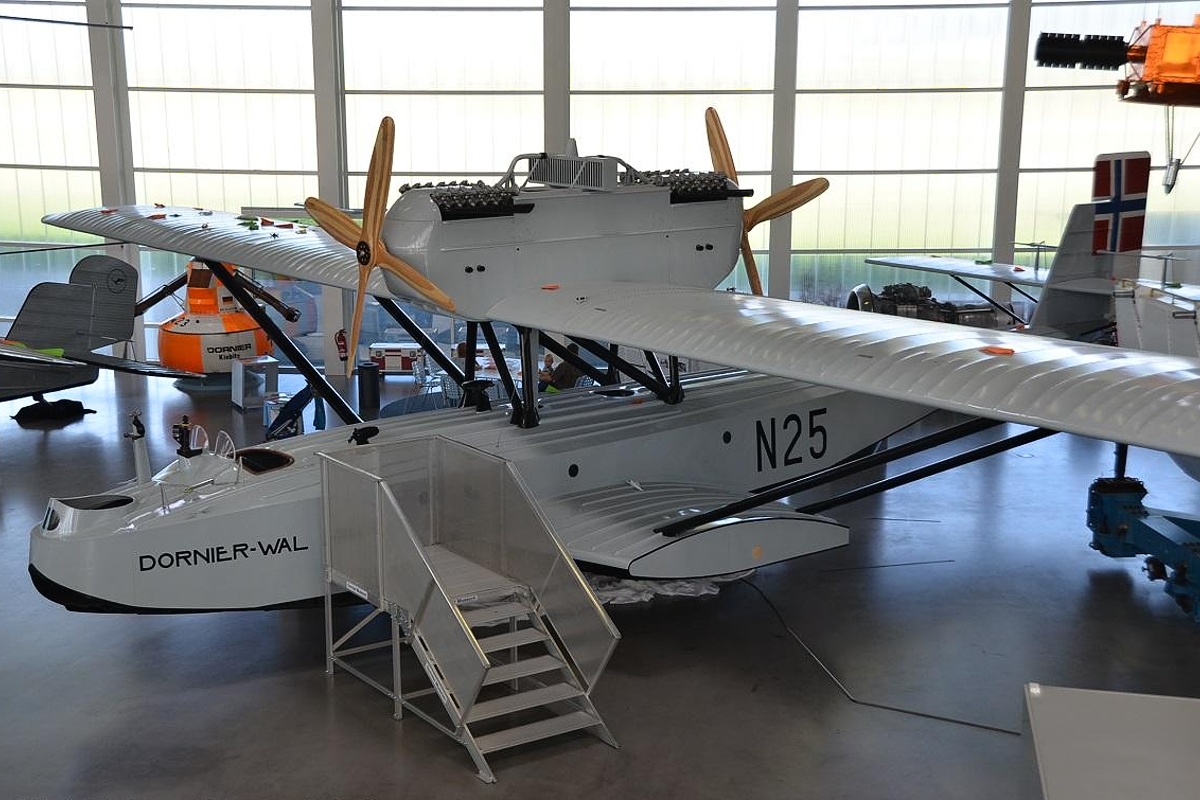 Dornier Do J Wal was a German twin-engine flying boat designed by Dornier Flugzeugwerke in the 1920s. Military versions of the Militär-Wal (or Wal Militare) were in the type designation of the Reich Ministry of Aviation of 1933 referred to as Do 15 and Do 16. Air Lufthansa used these machines to air mail in the South Atlantic, but became known thanks the courageous flights of Arctic Roald Amundsen, aviation pioneer Ramón Franco and others like him. This flying whale on the screen revived in the biographical film Amundsen, shot in 2019 by Norwegian director Espen Sandberg.
Dornier Do J Wal was a German twin-engine flying boat designed by Dornier Flugzeugwerke in the 1920s. Military versions of the Militär-Wal (or Wal Militare) were in the type designation of the Reich Ministry of Aviation of 1933 referred to as Do 15 and Do 16. Air Lufthansa used these machines to air mail in the South Atlantic, but became known thanks the courageous flights of Arctic Roald Amundsen, aviation pioneer Ramón Franco and others like him. This flying whale on the screen revived in the biographical film Amundsen, shot in 2019 by Norwegian director Espen Sandberg.
 This aircraft had a wing mounted on strong metal struts high above the fuselage. On the upper side of the reinforced wing was a large central nacelle with two piston engines mounted in tandem (the first with a traction and the second with a push propeller). On the sides of the hull were stabilization floats, designed and patented at the end of the First World War Claude Dornier and first used on the flying boat Zeppelin-Lindau Rs.IV. The development of the aircraft began in as early as 1921, but due to the limitations of the Treaty of Versailles, the machine until 1932 produced in the Italian company CMASA in Marina di Pisa. In this seaside resort on 6 November 1922 also took place his first take-off. The production of these machines was resumed in Germany only in 1931 and produced there until 1936. Later, due to high demand, also produced under license by the Spanish company CASA, the Dutch company Aviolanda and Kawasaki in Japan.
This aircraft had a wing mounted on strong metal struts high above the fuselage. On the upper side of the reinforced wing was a large central nacelle with two piston engines mounted in tandem (the first with a traction and the second with a push propeller). On the sides of the hull were stabilization floats, designed and patented at the end of the First World War Claude Dornier and first used on the flying boat Zeppelin-Lindau Rs.IV. The development of the aircraft began in as early as 1921, but due to the limitations of the Treaty of Versailles, the machine until 1932 produced in the Italian company CMASA in Marina di Pisa. In this seaside resort on 6 November 1922 also took place his first take-off. The production of these machines was resumed in Germany only in 1931 and produced there until 1936. Later, due to high demand, also produced under license by the Spanish company CASA, the Dutch company Aviolanda and Kawasaki in Japan.
In the military version, a two to four-man crew flew in an open cockpit, which was located near the nose. Before it was still installed one machine gun position and another one or two shooting ranges were in the middle of the fuselage. The civilian version known as the Verkehrs-Wal (or Wal Cabin) had a passenger cabin in front of the machine, providing space for up to 12 passengers. The open cockpit was moved beyond the interior part more backwards. Although it was a German aircraft was powered by engines mainly foreign production. The first versions were powered by two Rolls-Royce Eagle IX engines, each of 265 kW. The following versions used almost all available power units on the market. Drives from manufacturers such as Hispano-Suiza, Napier & Son, Lorraine-Dietrich, BMW, Fiat, Renault, Bristol or Siemens have been used.
Famous flights
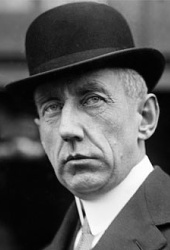 These flying boats also became famous in many of the pioneering and several reconnaissance years of that time. Two flying boats designated N-24 and N-25 were used in 1925 by Roald Amundsen together with Lincoln Ellsworth and pilot Hjalmar Riiser-Larsen in his first, unfortunately also unsuccessful attempt to reach the North Pole by air. The aircraft landed at 87 ° 44 ′ north latitude, but a few kilometers apart and without any possibility of radio contact. Despite these obstacles, both crews managed to finally meet. However, the N-24 was severely damaged and the entire Amundsen expedition faced a new challenge to build a runway and get back in order. Both crews have been working on the runway for more than three weeks, totally digging 600 tons of ice while consuming only a pound (454 g) of food rations per day. In the end, only six crew members took refuge in the N-25 hull, who managed to take off and escape the fatal cramp of crackling ice literally at the last minute.
These flying boats also became famous in many of the pioneering and several reconnaissance years of that time. Two flying boats designated N-24 and N-25 were used in 1925 by Roald Amundsen together with Lincoln Ellsworth and pilot Hjalmar Riiser-Larsen in his first, unfortunately also unsuccessful attempt to reach the North Pole by air. The aircraft landed at 87 ° 44 ′ north latitude, but a few kilometers apart and without any possibility of radio contact. Despite these obstacles, both crews managed to finally meet. However, the N-24 was severely damaged and the entire Amundsen expedition faced a new challenge to build a runway and get back in order. Both crews have been working on the runway for more than three weeks, totally digging 600 tons of ice while consuming only a pound (454 g) of food rations per day. In the end, only six crew members took refuge in the N-25 hull, who managed to take off and escape the fatal cramp of crackling ice literally at the last minute.
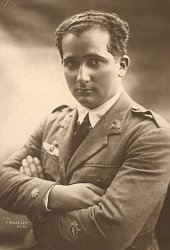 The following year, in 1926, Captain Ramón Franco became a Spanish national hero after he managed to transatlantic flight with Dornier Do J called Plus Ultra. His co-pilot was Julio Ruiz de Alda Miqueleiz, mechanic Pablo Rada, and the whole flight was also attended by a lieutenant of the Navy Teniente de Navio. The machine took off from Palos de la Frontera, Spain on 22 January and landed in Buenos Aires, Argentina on the 26th of the same month. During the crossing, the machine stopped in Gran Canaria, Cape Verde, Pernambuco, Rio de Janeiro and Montevideo. The entire flight of 10,270 km took the crew 59 hours and 39 minutes. The aircraft was subsequently donated to the Argentine Navy, which used them to deliver air mail and is currently on display in the Museum of the city of Luján, Argentina. A replica of this machine is then displayed in Madrid’s Museo del Aire.
The following year, in 1926, Captain Ramón Franco became a Spanish national hero after he managed to transatlantic flight with Dornier Do J called Plus Ultra. His co-pilot was Julio Ruiz de Alda Miqueleiz, mechanic Pablo Rada, and the whole flight was also attended by a lieutenant of the Navy Teniente de Navio. The machine took off from Palos de la Frontera, Spain on 22 January and landed in Buenos Aires, Argentina on the 26th of the same month. During the crossing, the machine stopped in Gran Canaria, Cape Verde, Pernambuco, Rio de Janeiro and Montevideo. The entire flight of 10,270 km took the crew 59 hours and 39 minutes. The aircraft was subsequently donated to the Argentine Navy, which used them to deliver air mail and is currently on display in the Museum of the city of Luján, Argentina. A replica of this machine is then displayed in Madrid’s Museo del Aire.
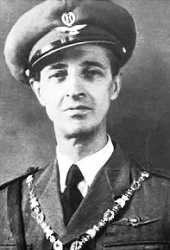 The first night crossing of the Atlantic Ocean succeeded in the night of 16 to 17 March 1927 military pilot José Manuel Sarmento de Beires and his crew. It consisted of navigator Jorge de Castilho and aircraft engineer Manuel Gouveia. The plane named Argos took off in the
The first night crossing of the Atlantic Ocean succeeded in the night of 16 to 17 March 1927 military pilot José Manuel Sarmento de Beires and his crew. It consisted of navigator Jorge de Castilho and aircraft engineer Manuel Gouveia. The plane named Argos took off in the 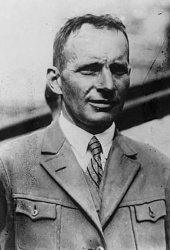 evening from the Bissagos Islands in Guinea, Portugal, and landed in the morning on Fernando de Noronha Island in Brazil. In 1929, the above-mentioned pilot R. Franco attempted another transatlantic flight, but this time his machine crashed at sea near the Azores. The entire crew was then a few days later rescued by the British aircraft carrier HMS Eagle. Another transatlantic flight was made in 1930 by the German aviation pioneer Wolfgang von Gronau. Interestingly, for this flight used the same machine (D-1422) with which Amundsen returned from the North Pole. He flew on August 18th from German Sylt via Italy, Greenland, Canadian Labrador until after 47 hours and 7 520 km landed in New York. Two years later, W. von Gronau decided that with a new aircraft (D-2053), which he called the Grönland Wal (Greenland Whale), the world would fly. Two machines of this type (D-ALOX Passat and D-AKER Boreas) also played an important role in the third German Antarctic expedition carried out in 1938-39.
evening from the Bissagos Islands in Guinea, Portugal, and landed in the morning on Fernando de Noronha Island in Brazil. In 1929, the above-mentioned pilot R. Franco attempted another transatlantic flight, but this time his machine crashed at sea near the Azores. The entire crew was then a few days later rescued by the British aircraft carrier HMS Eagle. Another transatlantic flight was made in 1930 by the German aviation pioneer Wolfgang von Gronau. Interestingly, for this flight used the same machine (D-1422) with which Amundsen returned from the North Pole. He flew on August 18th from German Sylt via Italy, Greenland, Canadian Labrador until after 47 hours and 7 520 km landed in New York. Two years later, W. von Gronau decided that with a new aircraft (D-2053), which he called the Grönland Wal (Greenland Whale), the world would fly. Two machines of this type (D-ALOX Passat and D-AKER Boreas) also played an important role in the third German Antarctic expedition carried out in 1938-39.
Mail transport across the South Atlantic
The last and largest version of the Dornier, eight and ten ton aircraft (also known as Katapultwal), operated Lufthansa for the transport of consignments on its route from Stuttgart to Natal, Brazil. Following the evaluation of the flights in 1933, the route was modified and supplemented with new stops in Banjul, Gambia and the Fernando de Noronha archipelago the following year. However, the problem of refueling on the high seas had to be solved first. Two merchant ships, SS Westfalen and MS Schwabenland, were built for this purpose. Both steamships in 1936 eventually supplemented the new ship MS Ostmark built directly for these purposes. Refueling of aircraft took place about half the oceanic part of the route. Flying boat landed at sea near the support ship, where it was lifted aboard by a crane with a special sail. Then the fuel was replenished and the machine was then discharged into the air using a catapult. These launches had the advantage of being able to carry more fuel than taking off from the water.
After the plane flew with the European Post to West Africa, the support ship always sailed for 36 hours before it could be used again. Lufthansa, however, began to have problems maintaining the good technical condition of these aircraft. When landing on large ocean waves often damaged the hull of flying boats, especially lighter eight ton variants. In April 1935, the airline’s support ships were abolished and the Dorniers flew the entire distance without technical stops. This shortened the time it took to deliver mail from Germany to Brazil. On this regular delivery line, which was canceled only in 1938, was eventually made over 300 flights. It served two lighter eight ton versions and six ten ton variants.
Lufthansa was not the only one that used these machines for air mail. Already in 1925, the French airline Compagnie Générale Aéropostale began shipping mail on an almost identical route, from France to Brazil. The mail was flown to Dakar, West Africa, and was then transported across the South Atlantic to Natal on board the transformed destroyers. The ocean crossing itself lasted five days, the whole trip eight days. Since 1930, Aéropostale began to overcome the entire route by air, but still lost aircraft and crew. Air France, of which it became part, began operating all air services between Europe and South America only in January 1936, almost two years after Lufthansa.
Photogallery:
Verze:
- Do J Kas Wal
- Do J Wal
- Do J Gas Wal
- Do J Bas Wal
- Do J II Wal
- Do J II Bas Wal
- Do J IIa Bos Wal
- Do J IIaK Bos Wal
- Do J IIb Bos Wal
- Do J IIc Ses Wal
- Do J IId Bis Wal
- Do J IId 16a Bis Wal
- Do J IId
- Do J IIe 16 Bos Wal
- Do J IIf Bos Wal
Odvozené typy:
- Do N Wal
- Do O Wal
- Do R2 Superwal
- Do R4 Superwal
- Do 15
- Do 16
| Manufacturer | Dornier Flugzeugwerke |
| Licensing manufacturers |
|
| Crew | 3 pilots |
| Capacity | 8-10 passengers |
| Airplane type | Highway |
| Engine | 2 x Rolls-Royce Eagle IX |
| Engine power | 2 x 265 kW |
| Speed |
|
| Length | 17,25 m |
| Span | 22 m |
| Height | 5,62 m |
| Wing area | 96 m² |
| Weight |
|
| Available | 3 500 m |
| Flying range | 800 km |
source:
https://en.wikipedia.org/wiki/Dornier_Do_J
https://en.wikipedia.org/wiki/Plus_Ultra_(aircraft)
https://www.valka.cz/topic/view/12483/Dornier-Do-J-Wal

